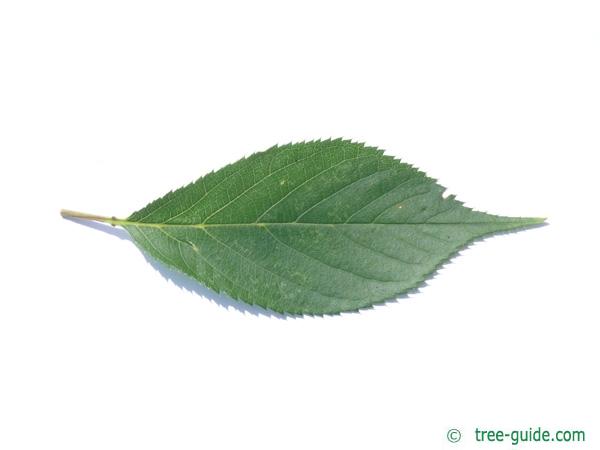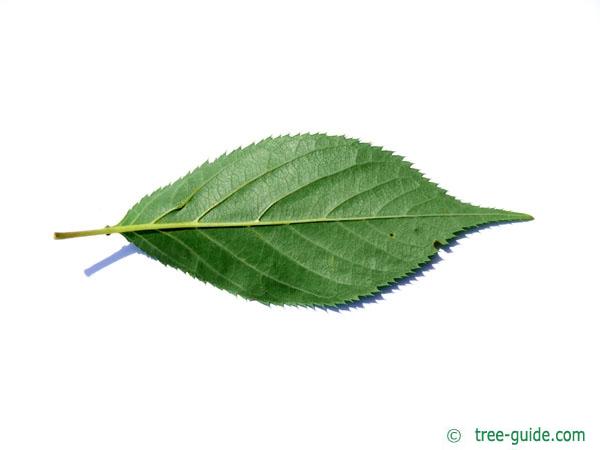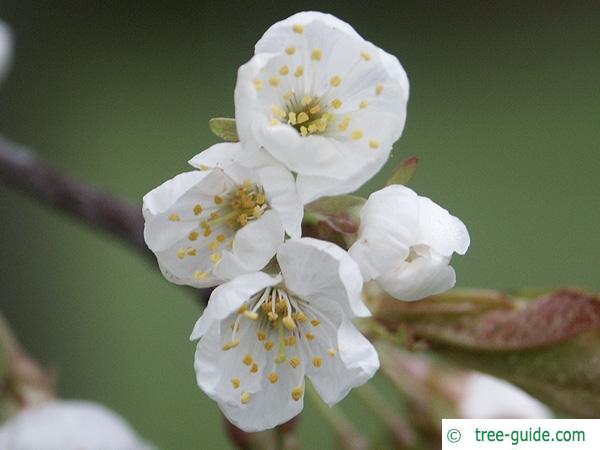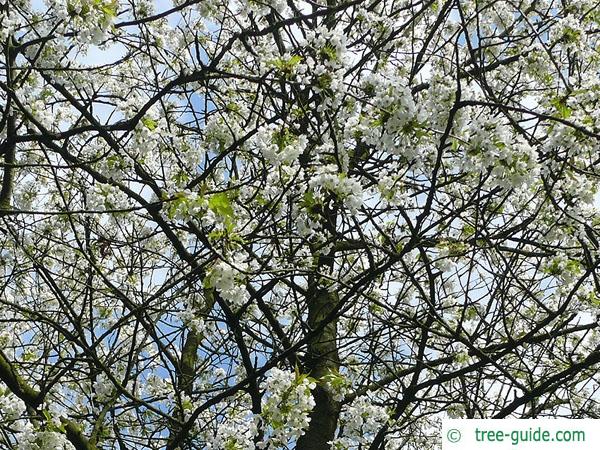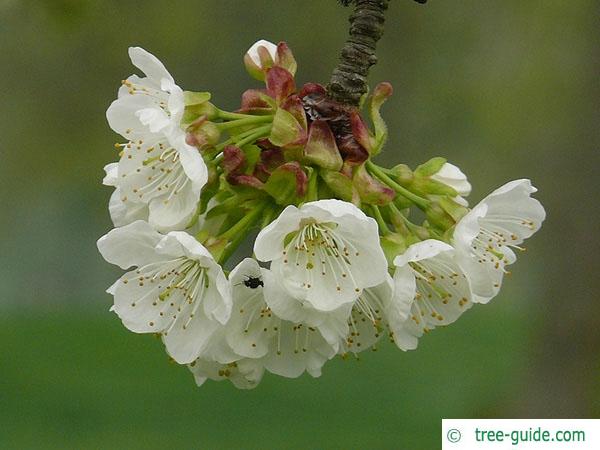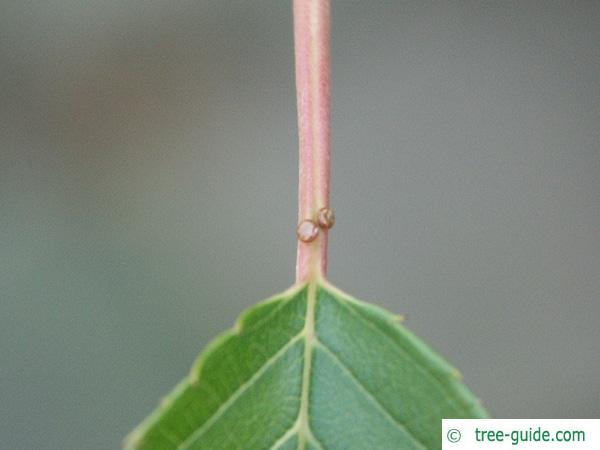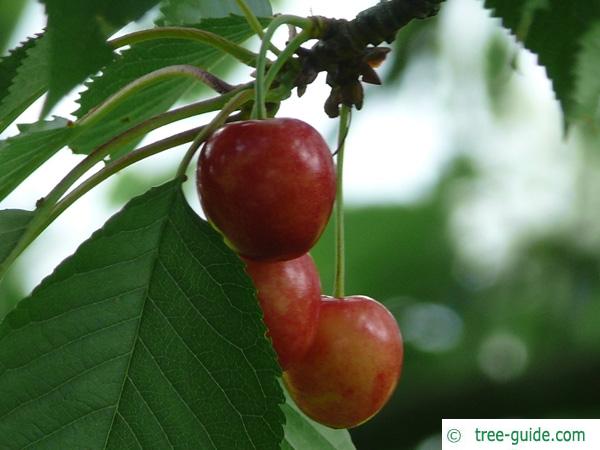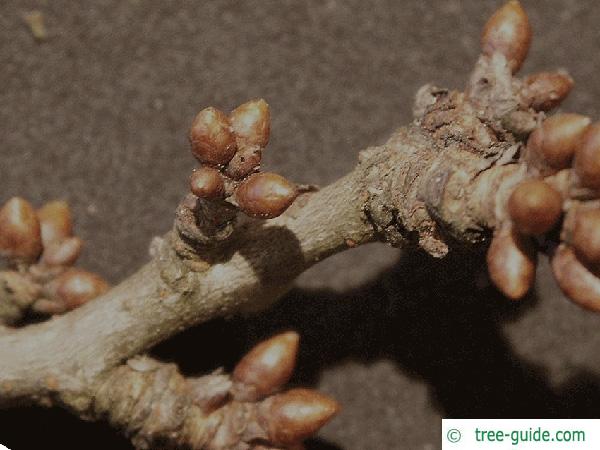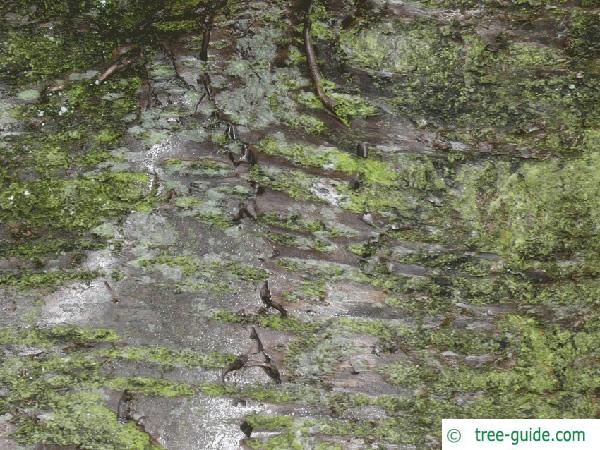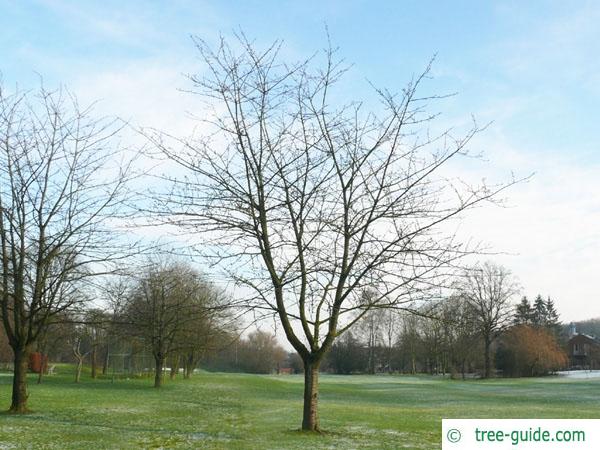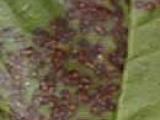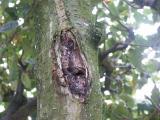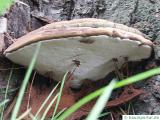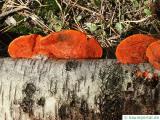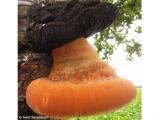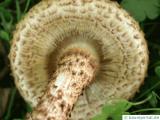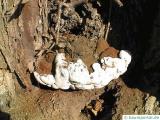Basisdaten
The Wild cherry is present across North Africa, Europe to the Near East. For cherries typical are the two clearly seeing nectar glands on the petiole. The wood of the cherry is valuable and is used for high quality furniture and veneers. The resin which emerges from wounds on the trunk can be chewed as a gum.
Tree profile
The leaves of Wild cherry are ovate to heart-shaped. The leaves are up to 12 cm (4.7 in) long. At the leaf stalk are two nectar glands. The leaf margin is serrated, often double serrated.
The flower is white with five petals. The anthers are reddish. The flowers stand in bunches.
Cherries, round fruits, first red then black, bitter but edible.
Branches are pale gray and glossy. The buds are reddish brown and protruding. The buds are heaped, particularly on branch end.
single tree or planting in groups in parks,high hedges, gardens
Cherries additional information
overview leaves | overview blossoms | overview fruit | overview trunkoverview winter | | overview trees







